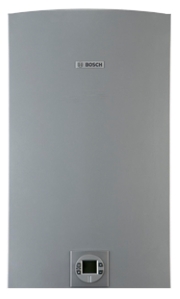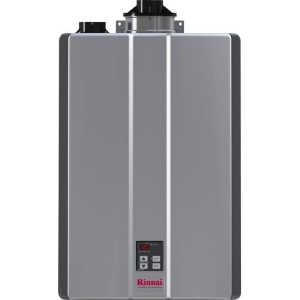How to fix a Noisy Burner on a Tankless Water Heater
Noisy burners in tankless water heaters, with the Bosch Therm 1210 ES model as an example, are more than just a mere annoyance; they signal potential underlying issues that could range from minor adjustments to significant safety hazards.
Learning how to fix a noisy burner is essential for the longevity of your heater and the safety of your home. Understanding the root causes of these noises and the corrective steps you can take is crucial.
 Bosch Therm 1210 ES
Bosch Therm 1210 ESWhat's the acceptable noise level?
Bosch specifies that the operational noise level of their tankless water heaters should fall between 45 and 65 dB. This range ensures efficient operation without becoming a disturbance.
However, when the unit exceeds this range, it indicates that attention is needed. These sounds can often be analyzed to figure out what the problem is.
To determine if your tankless heater is too loud, compare its noise level to common household sounds; for instance, a normal conversation typically measures around 60 dB. If your water heater's noise is louder, it's a sign that troubleshooting is necessary.
Regular maintenance checks can also prevent noise issues from developing, keeping your unit running smoothly within the recommended noise range.
How to fix a noisy burner: Identifying the common culprits
The majority of noise issues in tankless water heaters stem from two main components: the electric fan and the gas burner.
These parts are integral to the heater's operation, tasked with facilitating combustion and venting exhaust gases.
Through the heater's viewing port, one can observe the burner flames, which should maintain a steady pattern with a light blue tip, signifying complete combustion.
Anomalies such as yellow or red tips can indicate incomplete combustion, a frequent contributor to excessive noise.
Loose or damaged components within the water heater can also create vibration or rattling sounds during operation.
Regular inspections and maintenance are necessary to ensure all parts are securely fastened and functioning correctly to minimize noise.
Detailed solutions and preventative measures
Ensuring a room sealed operation
The integrity of the combustion chamber's seal is paramount. A breach in this seal can lead to the escape of combustion gases, posing safety risks and increasing operational noise.
Regular inspections for damage or wear and tear are advised to maintain a safe and quiet operation.
Adhering to venting standards
The installation of the venting system must comply with specific codes and standards (ANSI, ASTM, CSA, ULC), and adhere to the manufacturer's guidelines regarding pipe diameter and material to ensure safety and efficiency.
Incorrect installation can lead to unstable and improper gas combustion, reducing safety and causing loud combustion noises.
To prevent such issues, it is recommended that vent diameters be 3 inches and 4 inches, with the maximum lengths set at 31 ft and 63 ft, respectively, for the twin-pipe system.
Additionally, the vent and combustion air connector piping must be sealed gas-tight to prevent flue gas spillage and carbon monoxide emissions, maintaining a safe and quiet operation.
Optimizing combustion air supply
The direct vent models from Bosch's 1210 series require an adequate supply of air for combustion, sourced from the heater's surroundings.
Ensuring that the room is sufficiently large and free from blockages is crucial for maintaining stable combustion and minimizing operational noise.
Avoiding cross-contamination
Proper clearance between venting and combustion air pipes, in accordance with codes, can prevent the fan's rotation speed from decreasing, a situation often indicated by an error code C6. This ensures efficient operation and minimizes noise.
Maintaining correct gas pressure
The heater's performance is depending on receiving gas at the specified pressure levels-3.5” WC for natural gas and 8” WC for LPG.
Deviations from these specifications can lead to inefficiencies and increased noise levels. Regular checks by a certified technician are recommended.
Regular CO2 adjustments
Using a calibrated combustion gas analyzer to verify CO2 levels is essential for detecting improper gas pressures, often indicated by EA and EC error codes.
Regular adjustments based on these readings can help maintain the optimal operation of the water heater, thereby reducing noise.
Conclusion
By addressing the common causes of noisy operation in Bosch tankless water heaters and implementing the outlined solutions, homeowners can enjoy the benefits of an efficient, safe, and quietly operating water heating system.
These steps underscore the importance of understanding the operational nuances of your water heater, ensuring it remains a reliable source of hot water for your home.


